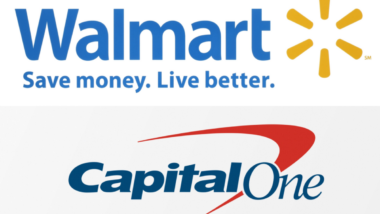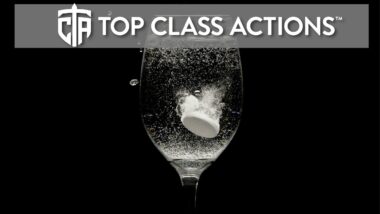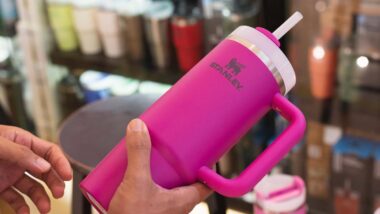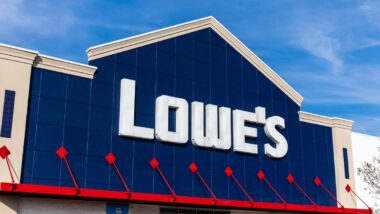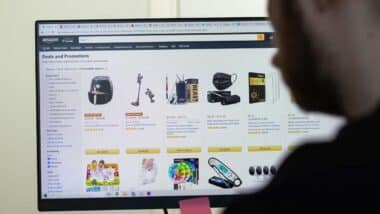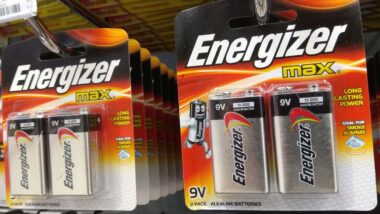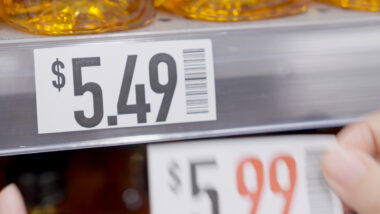Top Class Actions’s website and social media posts use affiliate links. If you make a purchase using such links, we may receive a commission, but it will not result in any additional charges to you. Please review our Affiliate Link Disclosure for more information.
The safety of talc in products such as Johnson’s Baby Powder has faced scrutiny since 1971 when British researchers found ovarian tumors with talc particles embedded in the tumors. There have since been numerous baby powder cancer lawsuits.
Dozens of research studies, involving thousands of women who used talcum powder, have found that those who do so “are about 30 percent more likely to be diagnosed with ovarian cancer than women who have not,” according to the National Center for Health Research.
 Is talc dangerous?
Is talc dangerous?
Talc and asbestos are both naturally mined minerals. Because they often are found next to one another, talc may sometimes become contaminated with asbestos during the mining process.
Cancer.gov says that asbestos refers to six related minerals. Asbestos is durable and heat resistant, so it has long been used in building materials. Its long fibers are what make it durable, but pose a problem if inhaled. Asbestos is a known human carcinogen, and it has been linked to lung cancer and mesothelioma.
According to the American Cancer Society (ACS), talc in talcum powder is made up of magnesium, silicon, and oxygen. The International Agency for Research on Cancer (IARC), a division of the World Health Organization (WHO), determined that asbestos is a human carcinogen as well as talc-containing asbestos.
Additionally, Cancer.gov says that talc may be linked to ovarian cancer. This has created some concern, as asbestos may be in some talc. Some experts worry that asbestos may enter the body if inhaled during use as well as when applied to the genital region.
Because of this risk of contamination, in 1973 the U.S. Food and Drug Administration (FDA) began requiring that talc be tested to ensure that it was free from asbestos contamination.
What does research show about talc use?
The use of talcum powder on the genital area has been linked to ovarian cancer, according to studies by Daniel W. Cramer and fellow researchers. In 1971, scientists found talc particles in human ovarian and uterine tumors. In 1982, the first case-control study was completed that showed a link between genital talc application and ovarian cancer. A 2016 study published in the medical journal Epidemiology found that women who used talcum powders regularly on their genital areas allegedly had a 33% increased risk of developing ovarian cancer.
Does Johnson & Johnson baby powder contain asbestos?
In October, the FDA announced it had found small amounts of asbestos in samples from a single bottle of Johnson’s Baby Powder. Johnson & Johnson responded by recalling a single lot of baby powder.
Consumers have filed lawsuits saying they were misled into believing talc was safe and used it for many years. According to some lawsuits, plaintiffs developed ovarian cancer after regularly applying Johnson & Johnson baby powder in their genital region. They say that had they known Johnson & Johnson baby powder was linked to cancer, they would not have used it as they did.
In June 2019, a California jury found in favor of a former fifth-grade teacher who said her mesothelioma was caused by asbestos exposure in Johnson & Johnson talcum powder. Bloomberg reported that Johnson & Johnson and Colgate must pay the woman nearly $10 million.
Government investigates Johnson & Johnson over talc safety concerns
The concerns over talc powder and its associated health dangers have prompted not just lawsuits by consumers but also government interest. The Department of Justice started a formal probe into Johnson & Johnson over whether or not the manufacturer knew about the cancer risk and purposefully hid it or downplayed it, according to Bloomberg.
In 2019, a Washington grand jury began the process of reviewing documents to determine whether the company had internal knowledge of the problems.
The U.S. Securities Exchange (SEC) has also reportedly investigated Johnson & Johnson about the purity of its products, including baby powder. The company’s baby powder contains talc, and concerns have been raised that it may contain asbestos, a possible carcinogen.
Business Insider notes that the investigation was launched after Reuters reported that Johnson & Johnson may have known that its talc contained asbestos, and concealed the information from the public, particularly hiding the possibility that the contaminated talc could be dangerous.
 Does Johnson & Johnson claim Its baby powder Is safe?
Does Johnson & Johnson claim Its baby powder Is safe?
Johnson & Johnson maintains that the talc used in its products does not contain asbestos, notes Business Insider, even though the company faces investigation. Some consumers say that internal documents suggest Johnson & Johnson knew of the presence of asbestos in talc, and the possible dangers therein, but failed to alert the public.
Johnson & Johnson has come to be associated with wholesome goodness and reliability, in large part due to the longevity of its business and its ubiquitous marketing campaigns. As indicated on the company website, J&J ad campaigns routinely reference that it has been around for more than 125 years and assures consumers that throughout its history, the company “has provided safe, mild and gentle products for babies and adults.”
Talc removed from J&J products
In May 2020, Johnson & Johnson announced that the company would be withdrawing its talc-based baby powder from select markets. Although the company continues to claim that its talc-based baby powder is safe and does not contain asbestos, the product will be discontinued in North America.
The company’s cornstarch-based baby powder will still be available in North America, and both varieties of baby powder will continue to be sold in other markets around the world. Johnson & Johnson will not pull existing baby powder bottles from store shelves and will allow retailers to sell stock they already have.
Johnson & Johnson claim that the decision to pull the product was made due to changes in consumer habits causing a decline in sales, as well as a campaign of misinformation regarding the product’s safety.
“Decades of scientific studies by medical experts around the world support the safety of our product,” Johnson & Johnson said in a statement, according to Medscape.
“Demand for talc-based Johnson’s Baby Powder in North America has been declining due in large part to changes in consumer habits and fueled by misinformation around the safety of the product and a constant barrage of litigation advertising.”
In August 2022, Johnson & Johnson announced that it would expand this strategy to the global market. As of 2023, all Johnson & Johnson baby powder will be made from cornstarch.
Although the company continues to claim that the product is safe, the removal of talc-based baby powder from store shelves may still feel like a win for some victims. One ovarian cancer survivor who started using baby powder at age 10 spoke to The New York Times about the removal of the product from the market. “It means no more little girls are going to go through what we went through. This stops now. That monster is off the shelves.”
Johnson & Johnson baby powder lawsuits
Lawsuits against pharmaceutical and household product giant Johnson & Johnson have piled up in recent years and thus far the company has won, settled, and lost cases, the latter resulting in judgments against the company totaling $172 million, Reuters reports.
Many women use talc-based baby powder as a personal hygiene or cosmetic product and now alleged victims claim that they were diagnosed with ovarian cancer or mesothelioma after using Johnson & Johnson baby powder for years or decades.
In a 2021 SEC filing, Johnson & Johnson said that it was setting assigned $4 billion for baby powder lawsuit and settlement expenses.
The company continues to face baby powder cancer lawsuits over the issue, however. Some juries have ruled in Johnson & Johnson’s favor, saying that plaintiffs’ cancer was not linked to baby powder, but some have not.
Do YOU have a legal claim? Fill out the form on this page now for a free, immediate, and confidential case evaluation. The attorneys who work with Top Class Actions will contact you if you qualify to let you know if an individual lawsuit or class action lawsuit is best for you. [In general, baby powder cancer lawsuits are filed individually by each plaintiff and are not class actions.] Hurry — statutes of limitations may apply.
ATTORNEY ADVERTISING
Top Class Actions is a Proud Member of the American Bar Association
LEGAL INFORMATION IS NOT LEGAL ADVICE
Top Class Actions Legal Statement
©2008 – 2024 Top Class Actions® LLC
Various Trademarks held by their respective owners
This website is not intended for viewing or usage by European Union citizens.
Get Help – It’s Free
Join a Free Baby Powder Cancer Class Action Lawsuit Investigation
If you used Johnson’s Baby Powder, Shower to Shower, or another talcum powder product and were diagnosed with ovarian cancer, you may have a legal claim. Family members of loved ones who died of ovarian cancer can also join. Submit your information now for a free case evaluation.
An attorney will contact you if you qualify to discuss the details of your potential case at no charge to you.
PLEASE NOTE: If you want to participate in this investigation, it is imperative that you reply to the law firm if they call or email you. Failing to do so may result in you not getting signed up as a client or getting you dropped as a client.

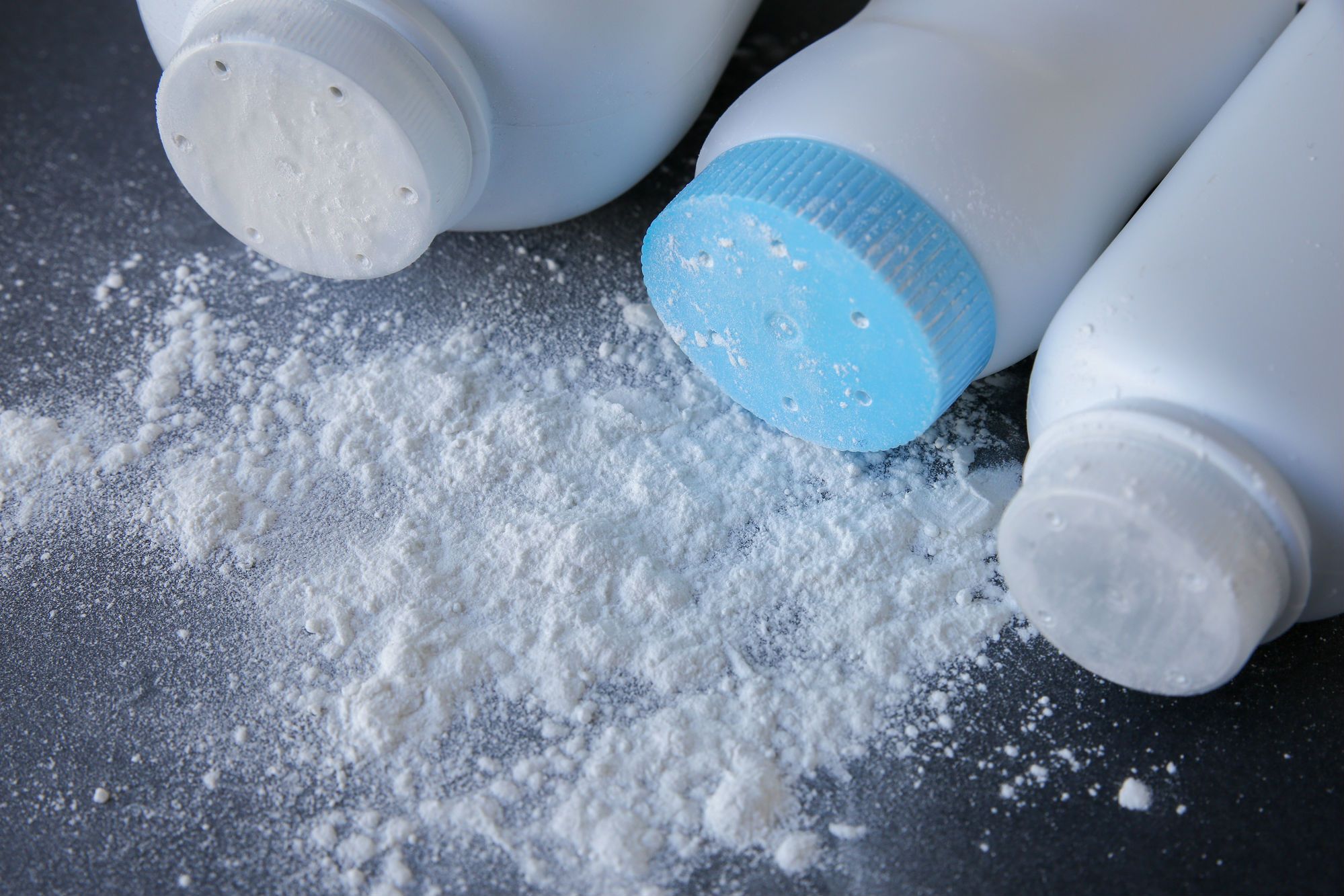
 Is talc dangerous?
Is talc dangerous?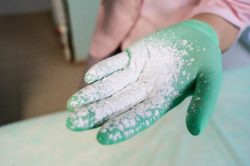 Does Johnson & Johnson claim Its baby powder Is safe?
Does Johnson & Johnson claim Its baby powder Is safe?
